Search
Did you mean: Constantine I?
Search Results
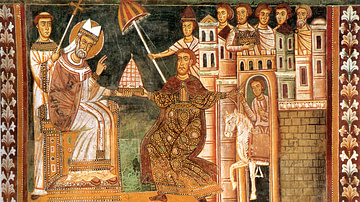
Image
Donation of Constantine
Sylvester I (served 315-335 CE) and Constantine the Great (r. 306-337 CE), San Silvestro Chapel at Santi Quattro Coronati, Rome.
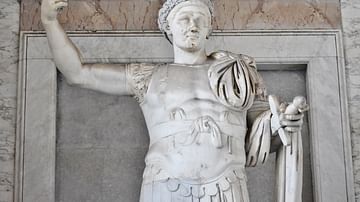
Image
Emperor Constantine
A statue of the Roman Emperor "Constantine the Great" who reigned from approximately 306 to 337 CE.
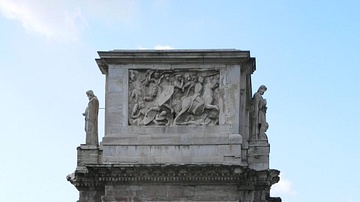
Image
Side View, Arch of Constantine
The Arch of Constantine in Rome, built in c. 315 CE to commemorate the Roman emperor's victory over Maxentius in 312 CE. It is the largest surviving example of a Roman Triumphal Arch.
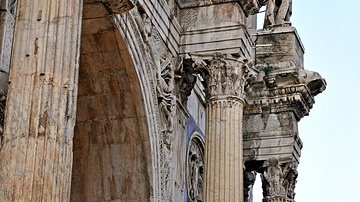
Image
Detail of the Arch of Constantine
A detail of the Arch of Constantine in Rome, built in c. 315 CE to commemorate the Roman emperor's victory over Maxentius in 312 CE. On each side of the arch four free-standing Corinthian columns support statues of Dacian prisoners taken...

Definition
Constantinople
Built in the seventh century BCE, the ancient city of Byzantium proved to be a valuable city for both the Greeks and Romans. Because it lay on the European side of the Strait of Bosporus, the Emperor Constantine understood its strategic importance...
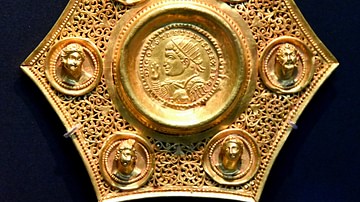
Image
Gold Coin Pendant of Constantine
Gold pendant set with a coin of Constantine the Great, c 320s CE. The British Museum, London. The pendant is made in a pierced metalwork technique popular in fine jewellery of the time. The obverse of the coin depicts a bust of Constantine...
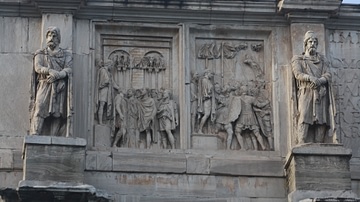
Image
Dacian Prisoners, Arch of Constantine
A detail from the Arch of Constantine I in Rome. Dedicated in 315 CE, the triumphal arch celebrates the emperor's victory over the Roman tyrant Maxentius in 312 CE. Between two Dacian prisoners taken from an earlier monument to Trajan, are...
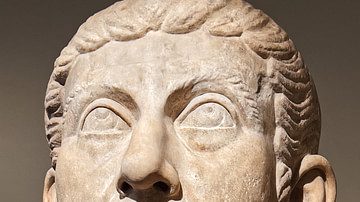
Image
Marble Head of Emperor Constantine I
Marble head of Emperor Constantine I (r. 306-337 CE) by an unknown artist, c. 325-370 CE.
Metropolitan Museum of Art, New York.

Image
Arch of Constantine I (South Side)
The south side of the Arch of Constantine I in Rome. Dedicated in 315 CE, the triumphal arch celebrates the emperor's victory over the Roman tyrant Maxentius in 312 CE. It is the largest surviving triumphal arch and the last great Imperial...
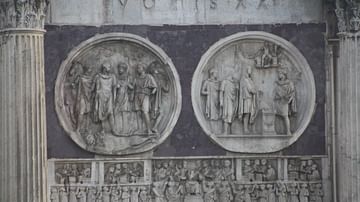
Image
Detail, Arch of Constantine I
A detail from the Arch of Constantine I in Rome. Dedicated in 315 CE, the triumphal arch celebrates the emperor's victory over the Roman tyrant Maxentius in 312 CE. The two medallion panels were taken from a now lost monument (130-138 CE...